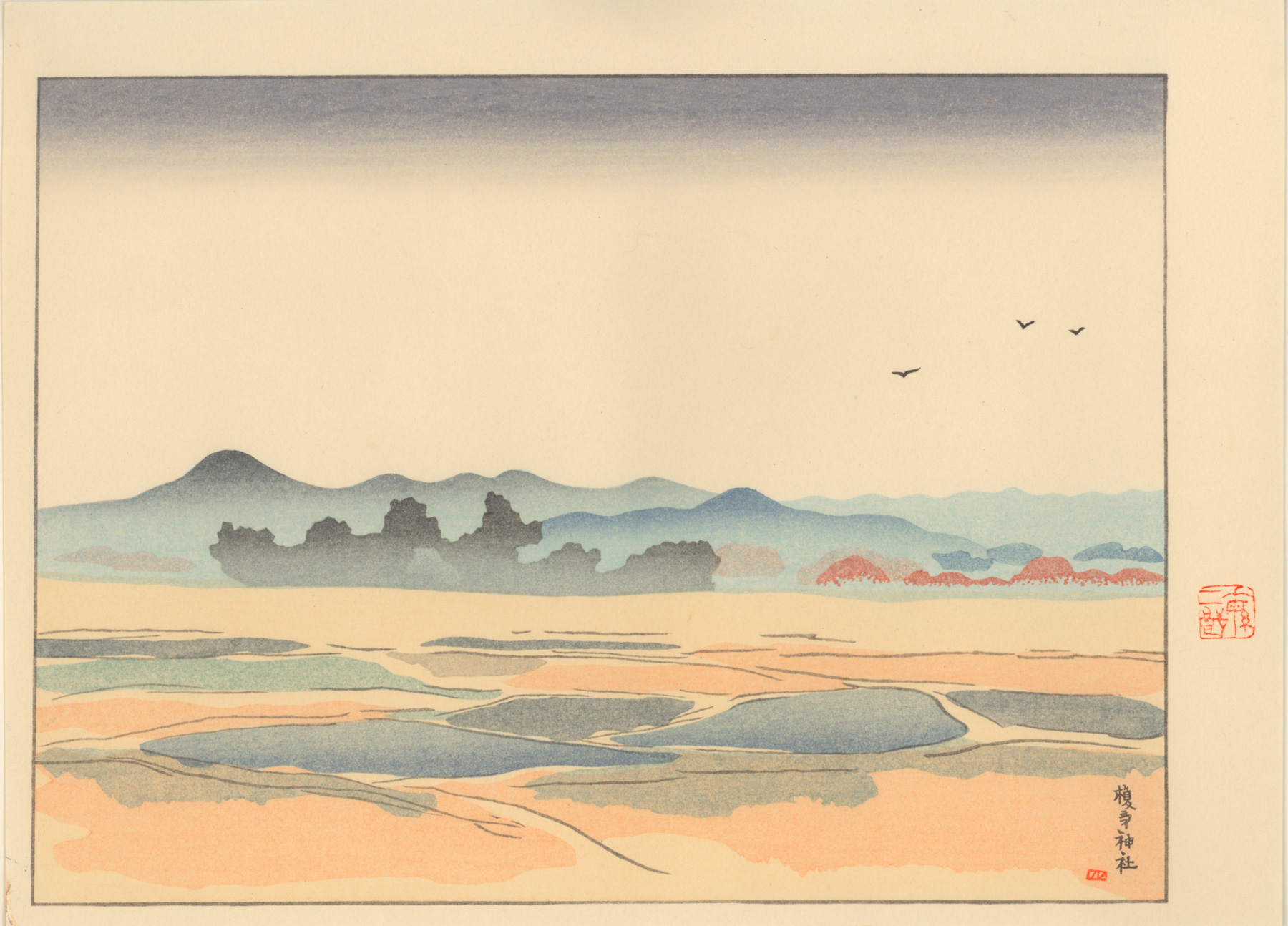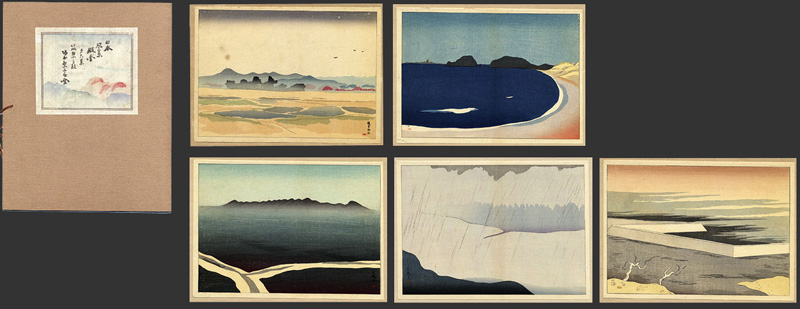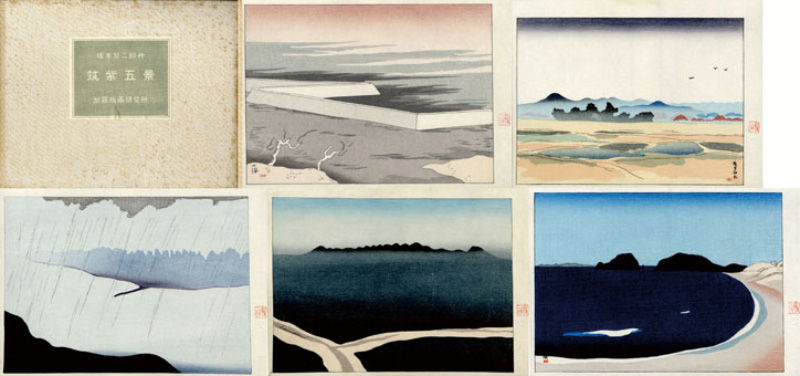About This Print
This print by Sakamoto Hanjirō, presents the view from the Tofurō Ruins in Dazaifu looking out to the wooded area where Enoki Shrine is located. Dazaifu is where Sugawara Michizane (845-903), poet, scholar and statesman of the mid-Heian period, whose spirit is worshiped as a god of thunder, passed away while in exile.
His abode was but a 3-room thatched hut in the vicinity of Futsukaichi, with its leaking roof, its crumbling walls and its broken fence. Here he lived from late February 901 till February 25, 903 when he passed away at the age of fifty-nine. His last two years were nothing but a life of dire poverty and old complaints.
Misake Yasuyuki [one of his loyal disciples] wanted to bury his remains near a chapel of the Anrakuji Temple, but the ox wagon carrying his coffin came suddenly to a standstill as it entered the precincts of the temple. It was impossible to drive it any farther. So Yasuyuki buried the remains right there, and later erected a shrine upon his grave.
Exactly on the same site, Kobayakawa Takakage constructed the present hall of worship in the year 1591 when he was appointed daimyo over the province of Chikuzen.1
This print is from the 1970 set of five prints titled Five Scenes of Tsukushi by the publisher Katō Junji. The five prints are re-issues (using recut blocks) of the original 1918 prints issued as set six of the ten set series titled Japan Scenery Prints published by Nakajima Jūtarō. For a print from the 1918 original issue see Sea of Fire from the series Japan Scenery Prints, Set 6: Tsukushi District.
For pictures of both the original and re-issued set, see below.
1 Japan Here and There, Seiichi Umemoto, The Hokuseido Press, 1959, p. 188-189
Notes of Lawrence Smith on Japan Scenery Prints
Source: Modern Japanese Prints 1912-1989, Lawrence Smith, British Museum Press, 1994, p. 42.
"Tsukushi is the ancient name of the area north-west of Kyushu [in the area of Chikuzen and Chikugo provinces] where Sakamoto was born. Sakamoto was rarely involved with sheet-prints, but like his colleagues on this series he had worked as a cartoonist and illustrator and had been a collaborator on the magazine Hōsun hence he was well used to graphic techniques. Indeed, his set [Tsukushi district] is the most strikingly designed in the series, combining impressionist, abstract and Expressionistic elements into a characteristically forceful blend."
Print Details
| IHL Catalog | #1393 |
| Title |  Title as given in table of contents for 1918 first edition: 榎寺神社 えのきでらじんじゃ [Enokidera jinja - Enoki Temple Shrine] Subtitle as given in table of contents for 1918 first edition: 都府樓方面より望む とふろうほうめんよりのぞむ Tofurō hōmen yori nozomu |
| Series | Five Scenes of Tsukushi [筑紫五景 Tsukushi Gokei] |
| Artist | Sakamoto Hanjirō (1882-1969) |
| Signature | unsigned |
| Seal |   |
| Publication Date | 1970 (originally 1918) |
| Edition | 2nd |
| Publisher |  originally by Nakajima Jūtarō 中島 重太郎 of the Japan Scenery Prints Association 日本風景版画会 |
| Carver | |
| Impression | excellent |
| Colors | excellent |
| Condition | excellent - mounted in original presentation mat |
| Genre | sosaku hanga (creative print) |
| Miscellaneous | |
| Format | chuban |
| H x W Paper | 7 3/4 x 10 1/2 in. (19.7 x 26.7 cm) |
| H x W Image | 6 13/16 x 9 5/16 in. (17.3 x 23.7 cm) |
| Collections This Print | |
| Reference Literature |




